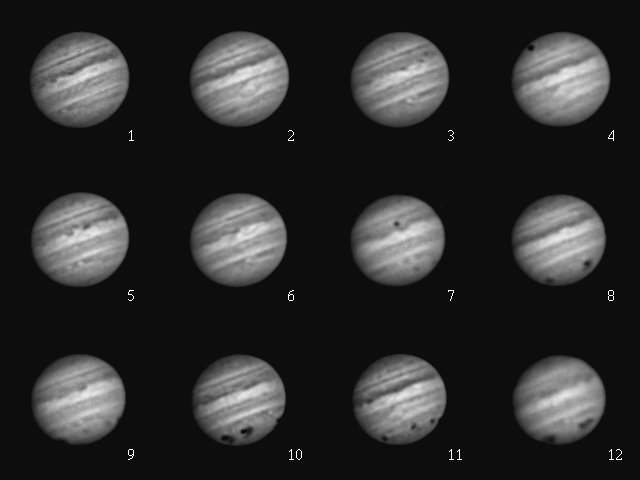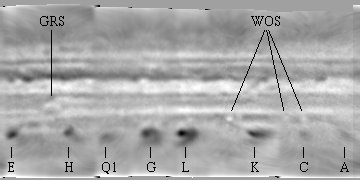
Images taken during the evening of July 20th 1994, showing the largest impacts zones G and L
JUPITER-SL9 ENCOUNTER
|
On July, 8th 1992, during a close flyby over Jupiter, the comet Shoemaker-Levy 9 (discovered in March 1993) cracked into many fragments. These fragments came back and crashed into Jupiter one after the other during the third week of July 1994, at a speed of 60 km/s. Due to the rotation of Jupiter, the series of crashes caused a belt of plumes (some of them larger than Earth) at the latitude of 44° south. The name of the impacts were derived from the names of the 21 fragments (from A to V), several hundred meters wide in average, detected by HST observations before the collision. All images are composites taken with a 130 mm (5") Clavé refractor at F/D 30 (Barlow lens and IR-blocking filter) and a Hi-SIS 22 CCD camera. Site: Pic-du-Midi Observatory (France). Authors: Christian Buil, Alain Klotz, Thierry Legault. Processing with MiPS software by Thierry Legault. |

Images taken during the evening of July 20th 1994, showing the largest impacts zones G and L

Images taken between July 3th and 22th 1994
Images 2 and 11 show the Great Red Spot, images 4 and 7 show a satellite shadow
Images 7 to 12 show SL9 impacts from July 17th to 22th

Planisphere (cylindrical projection) made from 6 images taken on July 19th, 20th and 21th,
showing all the major impacts (except R), the Great Red Spot (GRS) and some White Oval Spots (WOS)
|
|
Animation of a full rotation of Jupiter, made from the planisphere above and consisting of 90 images in orthographic (telescopic) projection